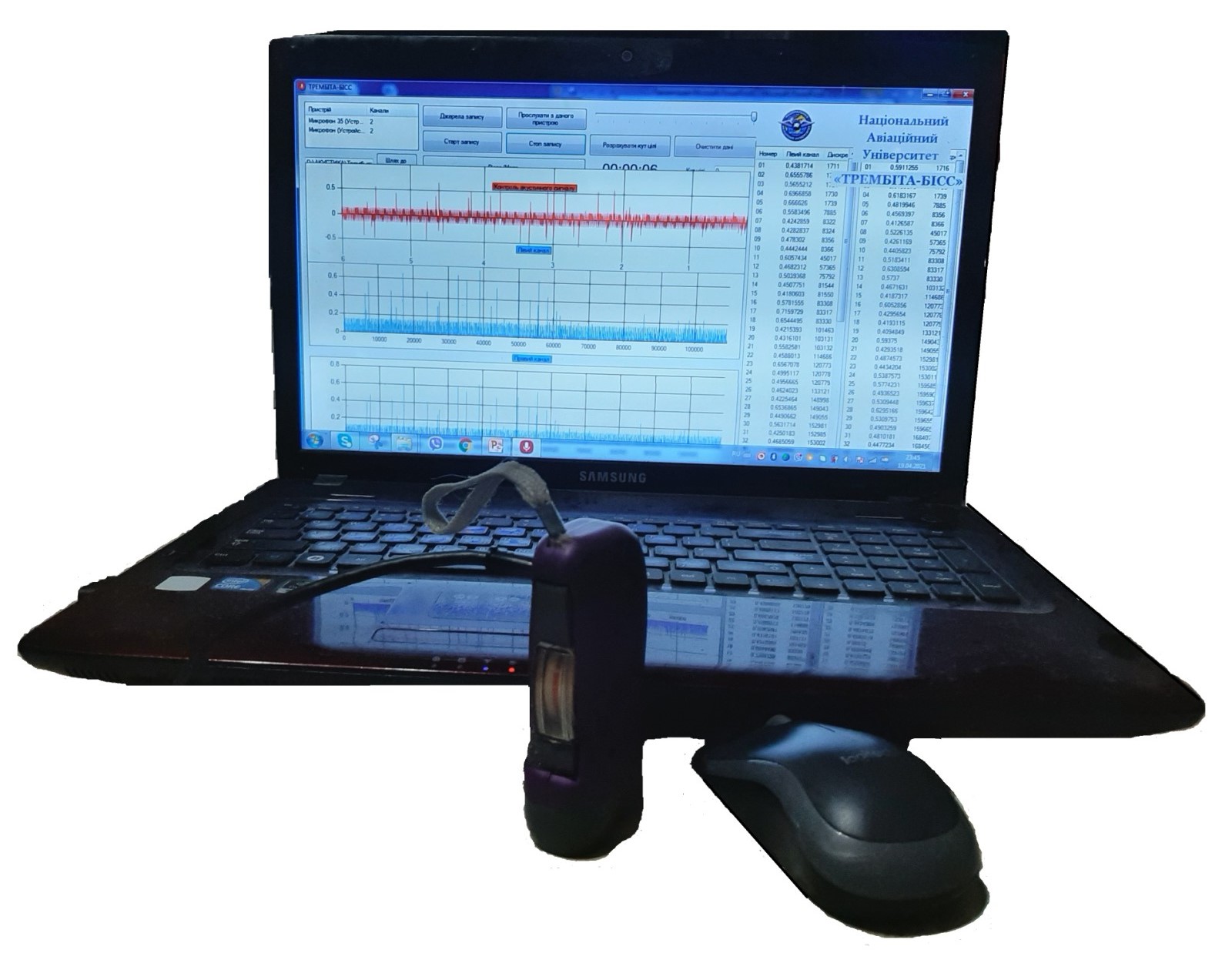Characteristics of acoustic signals in healthy children using the new device "Trembita-Corona"
DOI:
https://doi.org/10.15587/2519-4798.2023.290215Keywords:
acoustic monitoring, diagnostics, Trembita-Corona, children, pneumonia, laboratory-instrumental diagnosticsAbstract
In 2016, the last revision of the nomenclature of breathing sounds took place at the Congress of the European Respiratory Society in Amsterdam.
Purpose: to determine the features of the acoustic signal in healthy children using the new "Trembita-Corona" device.
Materials and methods. 100 healthy children aged from 1 month to 18 years were examined. We have distinguished 3 main groups. The 1st research group included 700 acoustic signals that are characteristic of the vesicular type of breathing, the 2nd group - 100 acoustic signals that are characteristic of the tracheal type of breathing, the 3rd group - 200 acoustic signals that are characteristic of the bronchovesicular type of breathing.
The results. With the help of the new "Trembita-Corona" device, a reference computerized database of acoustic signals for lung condition monitoring in healthy children was created. The parameters of the acoustic signal during different types of breathing in healthy children were formalized. Differences were found between the vesicular and the tracheal type of breathing in the average signal power in 0.1, 2, 3, 4, 5, 7, 8 and 9 octaves, in the frequency of the acoustic signal - in 0, 4, 5, 8 octaves, amplitude of the acoustic signal - in 0,3,4,5, 8 octaves. Differences between the vesicular and the bronchovesicular types of breathing were found in the average signal power in 0, 1, 2, 4, 5, 6, 7, 8 and 9 octaves, in the frequency of the acoustic signal - in 0, 3.5, 6 and 7 octaves, amplitude of the acoustic signal - in all 8 octaves.
Conclusions. The "Trembita-Corona" acoustic monitoring device makes it possible to describe sound phenomena that normally occur in healthy children depending on the type of breathing based on the average signal power, amplitude and frequency of the acoustic signal in 11 octaves
References
- Rufo, J., Zhang, P., Zhong, R., Lee, L. P., Huang, T. J. (2022). A sound approach to advancing healthcare systems: the future of biomedical acoustics. Nature Communications, 13 (1). doi: https://doi.org/10.1038/s41467-022-31014-y
- Lindsay, R. B. (1966). The Story of Acoustics. The Journal of the Acoustical Society of America, 39 (4), 629–644. doi: https://doi.org/10.1121/1.1909936
- Bishop, P. J. (1981). Reception of the stethoscope and Laennec’s book. Thorax, 36 (7), 487–492. doi: https://doi.org/10.1136/thx.36.7.487
- Forgacs, P. (1978). The Functional Basis of Pulmonary Sounds. Chest, 73 (3), 399–405. doi: https://doi.org/10.1378/chest.73.3.399
- Pasterkamp, H., Brand, P. L. P., Everard, M., Garcia-Marcos, L., Melbye, H., Priftis, K. N. (2015). Towards the standardisation of lung sound nomenclature. European Respiratory Journal, 47 (3), 724–732. doi: https://doi.org/10.1183/13993003.01132-2015
- Marushko, Y. V., Khomych, O. V. (2022). Frequency characteristics of acoustic features of sound signals in the lungs of children with pneumonia using a new acoustic diagnostic device "Trembita-Corona". Neonatology, surgery, perinatal medicine, 4 (46), 59–66. doi: https://doi.org/10.24061/2413-4260.xii.4.46.2022.9
- Marushko Yu.V., Khomych O.V. (2023) Characterization of the average power, frequency and amplitude of acoustic signal peaks over the lungs in children with community-acquired pneumonia using the new device "TREMBITA-CORONA". Medical science of Ukraine, 19 (1), 53–69. doi: doi: https://doi.org/10.32345/2664-4738.1.2023.08
- Pavlenko, P. M., Marushko, Yu. V., Olefir, O. I., Khomych, O. V., Shchehel, H. O., Khomych, V. M., Olefir, A. O. (2021). Pat. No. 148836 UA. Prystrii akustychnoho sposterezhennia iz osovoiu diahramoiu napravlenosti. MKP G10K 11/08 (2006.01), G10K 11/28 (2006.01), G01V 1/46 (2006.01), G01S 11/14 (2006.01). No. u202102140. declareted: 23.04.2021; published: 22.09.2021, Bul. No. 38.
- Wu, Y.-C., Han, C.-C., Chang, C.-S., Chang, F.-L., Chen, S.-F., Shieh, T.-Y. et al. (2022). Development of an Electronic Stethoscope and a Classification Algorithm for Cardiopulmonary Sounds. Sensors, 22 (11), 4263. doi: https://doi.org/10.3390/s22114263
- Rennoll, V., McLane, I., Emmanouilidou, D., West, J., Elhilali, M. (2021). Electronic Stethoscope Filtering Mimics the Perceived Sound Characteristics of Acoustic Stethoscope. IEEE Journal of Biomedical and Health Informatics, 25 (5), 1542–1549. doi: https://doi.org/10.1109/jbhi.2020.3020494

Downloads
Published
How to Cite
Issue
Section
License
Copyright (c) 2023 Olha Khomych, Yuriy Marushko

This work is licensed under a Creative Commons Attribution 4.0 International License.
Our journal abides by the Creative Commons CC BY copyright rights and permissions for open access journals.
Authors, who are published in this journal, agree to the following conditions:
1. The authors reserve the right to authorship of the work and pass the first publication right of this work to the journal under the terms of a Creative Commons CC BY, which allows others to freely distribute the published research with the obligatory reference to the authors of the original work and the first publication of the work in this journal.
2. The authors have the right to conclude separate supplement agreements that relate to non-exclusive work distribution in the form in which it has been published by the journal (for example, to upload the work to the online storage of the journal or publish it as part of a monograph), provided that the reference to the first publication of the work in this journal is included.








